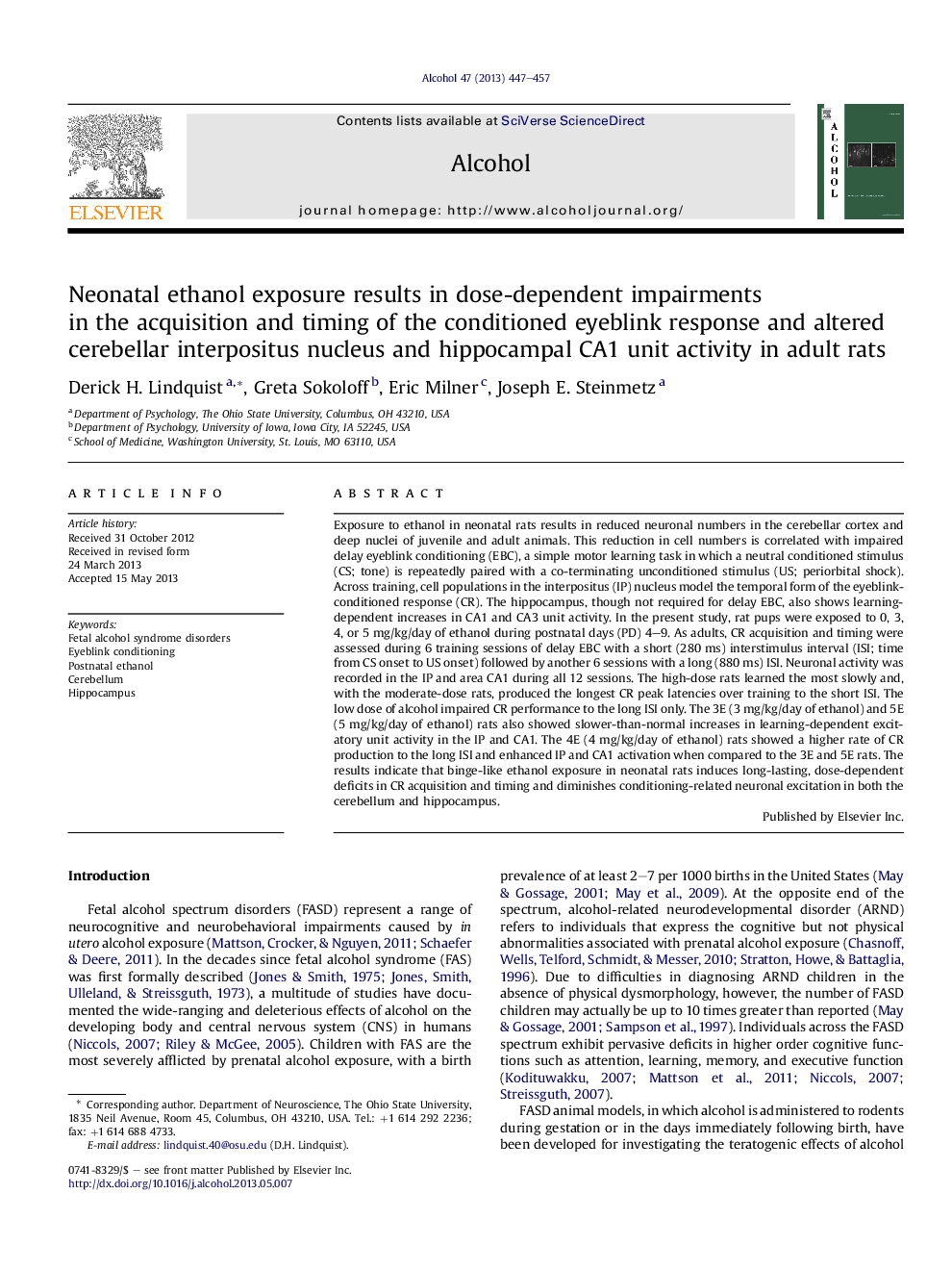| کد مقاله | کد نشریه | سال انتشار | مقاله انگلیسی | نسخه تمام متن |
|---|---|---|---|---|
| 1066973 | 948858 | 2013 | 11 صفحه PDF | دانلود رایگان |

Exposure to ethanol in neonatal rats results in reduced neuronal numbers in the cerebellar cortex and deep nuclei of juvenile and adult animals. This reduction in cell numbers is correlated with impaired delay eyeblink conditioning (EBC), a simple motor learning task in which a neutral conditioned stimulus (CS; tone) is repeatedly paired with a co-terminating unconditioned stimulus (US; periorbital shock). Across training, cell populations in the interpositus (IP) nucleus model the temporal form of the eyeblink-conditioned response (CR). The hippocampus, though not required for delay EBC, also shows learning-dependent increases in CA1 and CA3 unit activity. In the present study, rat pups were exposed to 0, 3, 4, or 5 mg/kg/day of ethanol during postnatal days (PD) 4–9. As adults, CR acquisition and timing were assessed during 6 training sessions of delay EBC with a short (280 ms) interstimulus interval (ISI; time from CS onset to US onset) followed by another 6 sessions with a long (880 ms) ISI. Neuronal activity was recorded in the IP and area CA1 during all 12 sessions. The high-dose rats learned the most slowly and, with the moderate-dose rats, produced the longest CR peak latencies over training to the short ISI. The low dose of alcohol impaired CR performance to the long ISI only. The 3E (3 mg/kg/day of ethanol) and 5E (5 mg/kg/day of ethanol) rats also showed slower-than-normal increases in learning-dependent excitatory unit activity in the IP and CA1. The 4E (4 mg/kg/day of ethanol) rats showed a higher rate of CR production to the long ISI and enhanced IP and CA1 activation when compared to the 3E and 5E rats. The results indicate that binge-like ethanol exposure in neonatal rats induces long-lasting, dose-dependent deficits in CR acquisition and timing and diminishes conditioning-related neuronal excitation in both the cerebellum and hippocampus.
Journal: Alcohol - Volume 47, Issue 6, September 2013, Pages 447–457